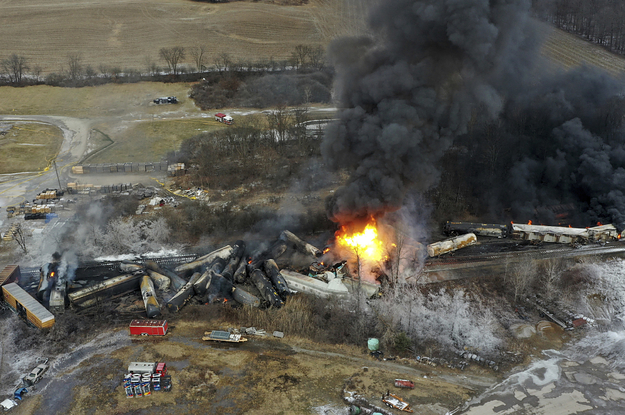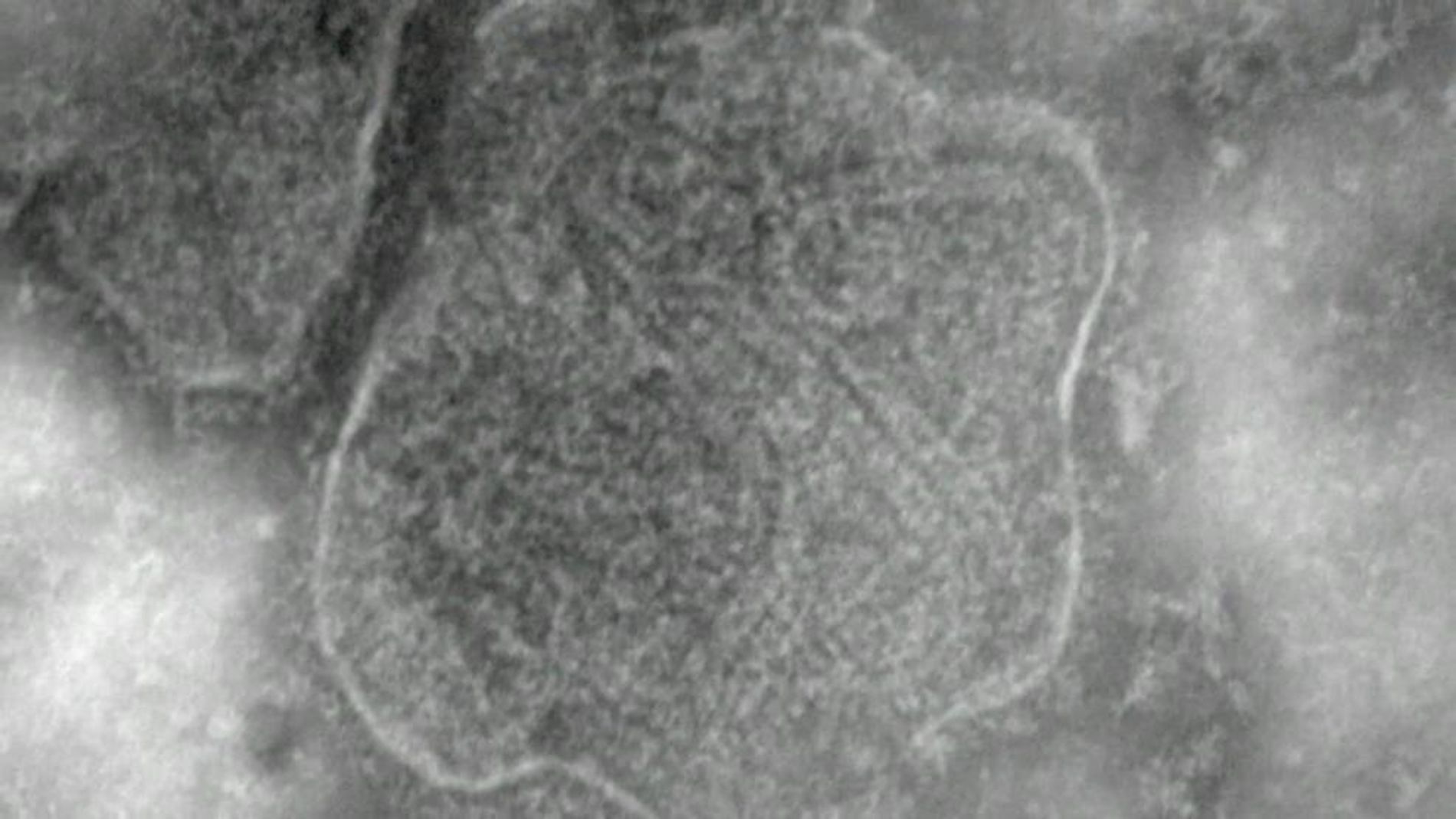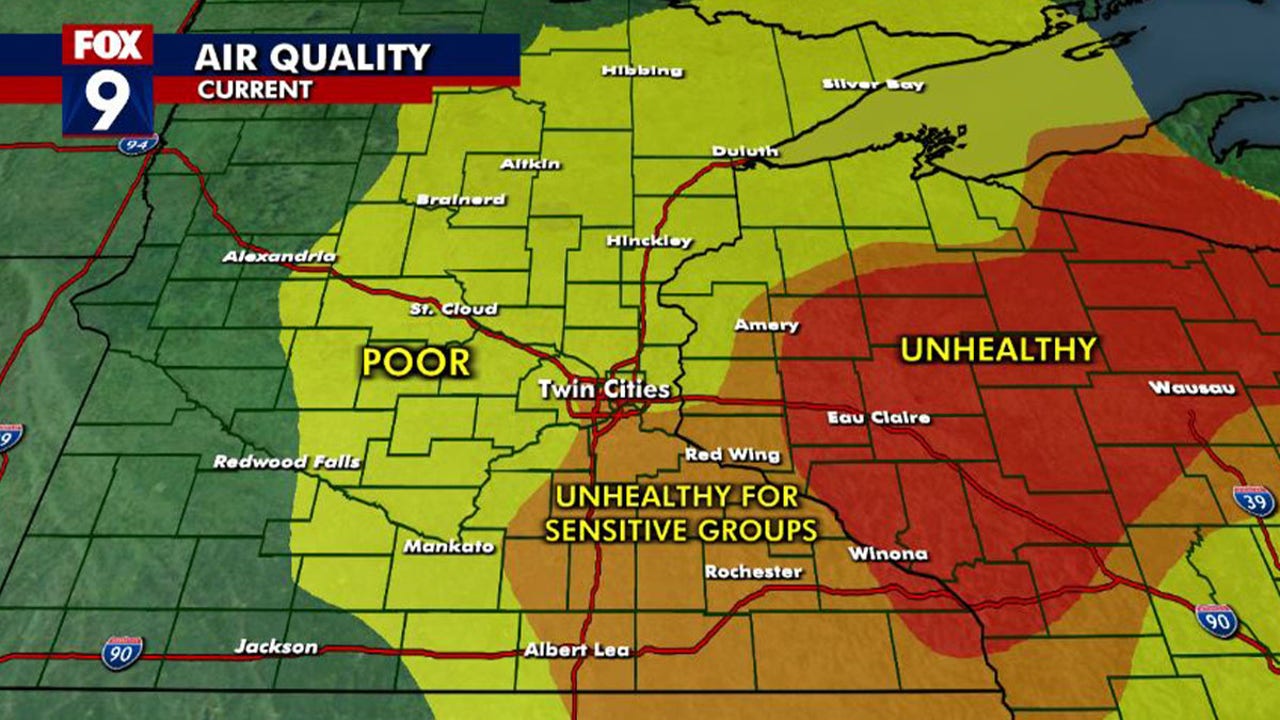Ohio Train Derailment: Persistence Of Toxic Chemicals In Structures

Table of Contents
Types of Toxic Chemicals Involved and Their Persistence
The derailment released a cocktail of toxic chemicals, with vinyl chloride and butyl acrylate being among the most concerning. These chemicals present a unique challenge due to their persistence in the environment. Vinyl chloride, a known carcinogen, is volatile, meaning it readily evaporates into the air, but it can also be absorbed into soil and water. Butyl acrylate, a highly reactive compound, can contaminate soil and water through direct contact and runoff.
- Vinyl Chloride: High volatility contributes to air contamination, but its solubility allows it to infiltrate water sources and soil. Studies suggest a relatively short half-life in the atmosphere but a longer persistence in soil and water.
- Butyl Acrylate: Its reactivity means it can bind to soil particles, making it difficult to remove. It's also soluble in water, posing a threat to aquatic ecosystems and potentially leaching into building foundations.
- Other Chemicals: The exact composition of the released chemicals and their distribution are still under investigation, but the potential for long-term environmental contamination remains a significant concern.
The pathways of contamination are multifaceted:
- Soil Absorption: Chemicals directly infiltrated the soil, potentially contaminating groundwater and leading to long-term leaching into structures.
- Air Deposition: Volatile chemicals like vinyl chloride dispersed through the air, settling onto surfaces and penetrating building materials.
- Water Runoff: Rainfall washed chemicals into waterways and potentially into residential water supplies.
Understanding the chemical persistence and environmental fate of these pollutants is crucial for effective remediation and risk assessment. Further research is needed to determine the precise half-life of these chemicals in the affected area's unique environmental conditions.
Contamination Pathways into Structures
The penetration of toxic chemicals into homes and buildings occurred through several pathways:
- Air Infiltration: Volatile organic compounds (VOCs), like vinyl chloride, readily infiltrated structures through cracks and gaps in walls, windows, and foundations.
- Contaminated Water: Leaking pipes or contaminated groundwater could have introduced chemicals into homes through drinking water supplies or even seeping into basements.
- Direct Contact: Initial exposure may have resulted from direct contact with contaminated soil or debris.
Porous building materials, like wood and drywall, readily absorbed these chemicals, acting as reservoirs for long-term release. The potential for long-term leaching from contaminated soil into building foundations is a significant concern, leading to persistent soil-to-structure transfer. The long-term impact of this building contamination is still being assessed.
Health Risks Associated with Long-Term Exposure
Long-term exposure to the chemicals released in the Ohio train derailment poses serious health risks:
- Respiratory Illnesses: Exposure to vinyl chloride can cause respiratory problems, including bronchitis and lung cancer.
- Cancer Risk: Vinyl chloride is a known human carcinogen, increasing the risk of various cancers. Butyl acrylate also raises concerns due to its potential toxicity.
- Reproductive Health: Some of the released chemicals can negatively impact reproductive health, causing infertility or birth defects.
The cumulative effects of chronic, low-level exposure are particularly worrisome. Assessing the long-term health risks is challenging due to the complexity of exposure pathways and individual variations in susceptibility. Ongoing monitoring and epidemiological studies are crucial to understand the full extent of these health impacts. Access to relevant studies and health advisories from public health organizations is vital for the affected community.
Cleanup and Remediation Efforts
Cleaning up contaminated structures presents significant challenges. Remediation techniques under consideration include:
- Demolition: In severely contaminated cases, demolition of affected structures may be necessary.
- Decontamination: Specialized cleaning techniques are used to remove chemicals from surfaces and building materials.
- Soil Removal: Excavation and removal of contaminated soil surrounding buildings are crucial steps in mitigating further contamination.
The effectiveness of current cleanup efforts remains to be seen, demanding rigorous long-term monitoring and assessment. Transparency and community engagement are paramount to ensure the safety and well-being of affected residents. Comprehensive environmental cleanup plans must account for the persistent nature of these pollutants.
Conclusion
The Ohio train derailment highlights the devastating and long-lasting consequences of environmental contamination. The persistence of toxic chemicals in affected structures poses significant long-term health effects and environmental risks. Thorough and ongoing monitoring, coupled with effective remediation techniques, are essential. Transparent communication and community engagement are vital to addressing the concerns of affected residents. We must advocate for comprehensive testing, remediation, and support for those impacted by this disaster. Stay informed about the ongoing situation and seek out resources for assistance and support related to environmental contamination and its health effects. Demand accountability and action to ensure the complete cleanup and remediation of the Ohio train derailment site.

Featured Posts
-
 Controles Antidrogue Chauffeurs Cars Scolaires Multiplication Des Tests Annoncee
May 30, 2025
Controles Antidrogue Chauffeurs Cars Scolaires Multiplication Des Tests Annoncee
May 30, 2025 -
 San Diego Issues Inclement Weather Program For Tonight
May 30, 2025
San Diego Issues Inclement Weather Program For Tonight
May 30, 2025 -
 Virginias Second Measles Case Of 2025 What You Need To Know
May 30, 2025
Virginias Second Measles Case Of 2025 What You Need To Know
May 30, 2025 -
 Leijdekkers Ties To Sierra Leone Presidents Daughter Extradition Impasse
May 30, 2025
Leijdekkers Ties To Sierra Leone Presidents Daughter Extradition Impasse
May 30, 2025 -
 Malaysias Solar Sector Faces Challenges From New Us Tariffs
May 30, 2025
Malaysias Solar Sector Faces Challenges From New Us Tariffs
May 30, 2025
Latest Posts
-
 Wildfires In Canada Severe Air Quality Degradation In Minnesota
May 31, 2025
Wildfires In Canada Severe Air Quality Degradation In Minnesota
May 31, 2025 -
 Canadian Wildfire Smoke Impacts Minnesotas Air Quality
May 31, 2025
Canadian Wildfire Smoke Impacts Minnesotas Air Quality
May 31, 2025 -
 Minnesota Air Quality Crisis Impact Of Canadian Wildfires
May 31, 2025
Minnesota Air Quality Crisis Impact Of Canadian Wildfires
May 31, 2025 -
 Canadian Wildfires Minnesota Air Quality Plummets
May 31, 2025
Canadian Wildfires Minnesota Air Quality Plummets
May 31, 2025 -
 The Texas Panhandle Wildfire A Year Of Recovery And Rebirth
May 31, 2025
The Texas Panhandle Wildfire A Year Of Recovery And Rebirth
May 31, 2025
